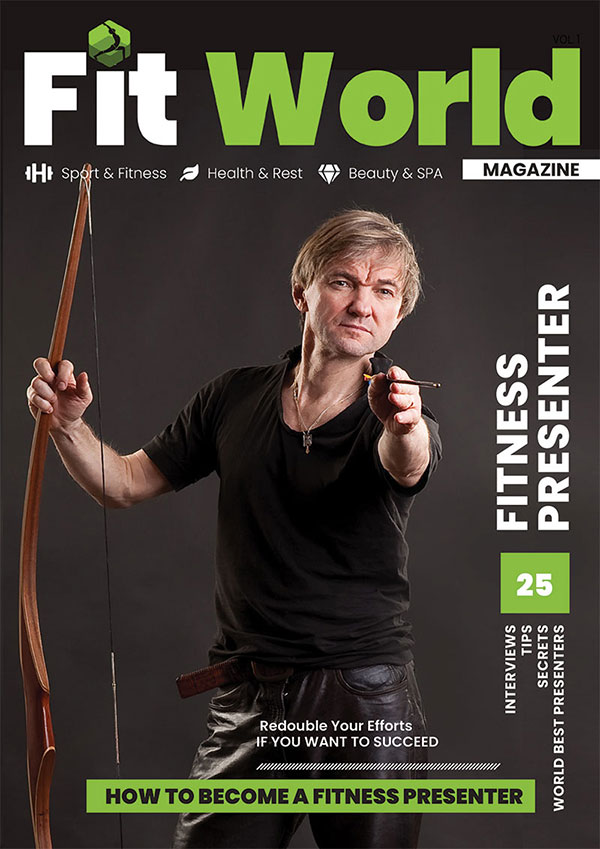What is fitness
So what is this popular phenomenon and what do fitness do? The word comes from the English verb to fit – to keep oneself in shape, to be healthy. But to be constantly in good shape, physical activity alone is not enough – we need exercise, giving up bad habits, proper rest and healthy eating – that’s the basis of the concept.
Fitness is not just physical training or exercise, it’s a philosophy of existence, which organically combines sports, active lifestyle, proper nutrition and healthy optimism. This is the fruit of many years of practical work of experts, which is embodied in special training programs designed to promote health and spirit. The main objective of fitness is not to achieve athletic performance, but to make a person’s life full, joyful and healthy, to learn to conquer new horizons.
From the history of fitness
In fact, even our distant primitive ancestors were engaged in fitness without realizing it: physical activity helped the ancients to survive. And in ancient Greece in general there was a cult of a beautiful body with a healthy spirit contained in it: the foundations of the harmonious development of personality were laid exactly in the ancient era, and the great minds were also involved in this – Aristotle, Hippocrates, Plato. At the time of the Olympic Games the wars were stopped, which shows the deep admiration of the Greeks for sports competitions.
It’s interesting! It was in Ancient Greece that exercises with music started fitness activities: even then it was noticed that the gymnastic exercises with musical accompaniment are more effective.
A in ancient India, the philosophy of harmonious development of body and soul embodied in yoga, which is popular in the third millennium.
Although the term fitness itself appeared in the U.S. in the 1970s, the first specialized programs were developed for training American soldiers during World War II. Active work on the implementation of the new system continued in the late twentieth century, when the U.S. government was seriously concerned about the health of its citizens. A special Council on Fitness was created under the President, which, in addition to politicians, included the best trainers and sports professionals, psychologists and medical specialists. The Council was tasked with promoting a healthy and active lifestyle, physical development. And at the end of the 80s fitness gained such popularity that it began to engage all segments of the population – from workers to millionaires. And in the former Soviet Union the foundations of fitness were laid by mass physical education activities and a well-developed network of sports clubs.
Today the free sections are relegated to history, but there is a growing network of modern fitness clubs that once appeared in the United States as part of the fight for the health of the nation. And the number of fitness fans has quadrupled in recent decades!
Good to know! Many people, especially businessmen, reacted skeptically to the opening of the first domestic fitness clubs: in the 90s there was a serious explanatory work. The founders had to convince people of the benefits of exercise and teach them how to properly exercise. And only the first serious results convinced the skeptics and contributed to the wide popularization of this trend.
What are the benefits of fitness classes?
Fitness is a philosophy, which should find a place in your life, because the passion for it as a result gives a lot of advantages and benefits. What benefits do fitness classes bring to a person?
– Improving the body: normalizing the metabolism, digestion, strengthening the cardiovascular, bone, muscle systems, improve immunity;
– a slim, trim figure, a beautiful body;
– the development of coordination of movements, the formation of the correct posture and gait;
– the prevention of osteoporosis, thrombosis;
– reducing stress on the body, reducing nervous tension;
– improving the overall health, a burst of energy, vitality, and increased efficiency;
– development of an active lifestyle.
This is interesting. According to studies, fitness classes for seven minutes normalize blood sugar levels.
Thanks to fitness classes, you will become more enduring and stronger, more flexible. All in all contributes to the development of self-confidence, stimulates the conquest of new peaks. A man strives to realize himself as fully as possible, and therefore becomes more successful.
The main types of fitness
There are many trends in fitness, each of which is a separate type of sport. Everyone who is going to engage in fitness chooses a direction according to the capabilities of the body and depending on the objectives set before them. We shall mention only the most popular types of fitness.
Aerobics and its subtypes.
This direction, based on exercises for the development of muscles, plasticity and proper breathing, has several varieties:
– classical;
– Dance (afro, latino, zumba, funk, belly dancing, on a pole, etc.), distinguished by movements specific to a particular type of dance;
– step-aerobics, performed with the help of a special platform;
– slide-aerobics, where the exercises are similar to the movements of skiers or skaters;
– Kick-aerobics: the development of plasticity is combined with strength training;
– Track aerobics – exercises on a treadmill with intervals and changes in the incline and speed of the simulator;
– Pump-aerobics – a type of power training with a mini barbell, exercises with slopes, presses, squats (a mixture of aerobics and bodybuilding);
– cycling aerobics – cardio load on an exercise machine; it differs from ordinary exercises on an exercise bike in that it simulates competition – a group cycling race in various modes.
The advantages of aerobics in all its modifications: strong, trim relief body, strengthening muscles and respiratory system. And one more thing: group workouts provoke competitive spirit and stimulate to achieve new results, contribute to good mood. Encounters and meetings with interesting people can be the result of such classes.
Aqua Aerobics
A special kind of fitness that presupposes physical exercises in the water to the music. Significant advantages of this method are good results and safety for the body. The high efficiency of exercise is due to the load on all the muscles of the body. Water, which has a higher density than air, provides resistance to movements in all directions, thus increasing the load. And more: the temperature in the pool is lower than the body temperature, to warm up, the body must expend calories – so they are burned additionally. In addition, such exercises are safe, because the water “damps” the weight of the body and reduces the load on the spine and joints.
Pros of aquafitness – the prevention of obesity, cellulite, varicose veins; weight loss; strengthening the cardiovascular system, stabilizing blood pressure.
This is interesting. Exercises are carried out in deep water with the use of an inflatable belt and in shallow water, where a person stands on his feet. Thus, one does not need to know how to swim to do exercises in the water.
Pilates
An exercise system named after its founder, a set of exercises to develop flexibility and individual muscle groups. In addition to improving your health and losing weight, Pilates also serves as a means of post-traumatic rehabilitation, including the rehabilitation recommended after spinal injuries.
Pilates training builds endurance and flexibility, improves muscle activation, metabolism and posture, and teaches you how to control your body and breathing. Classes help relieve tension and relaxation and are recommended even for pregnant women.
Nordic Walking
Other names of walking are Nordic, Nordic or Finnish. It is a special technique of movement with specially designed sticks. It is an effective training tool for the cardiovascular system and the development of endurance that returns people with problems or injuries of the locomotor system to a fuller life.
Stretching
The name of this type of fitness comes from the English word “stretching.” The course is based on exercises for stretching muscles and ligaments. The benefits of doing stretching: it improves the elasticity of various muscle groups, improves blood circulation, reduces tension, burns subcutaneous fat and eliminates cellulite.
Callanetics
One of the commercial types of fitness. The complex consists of yoga breathing exercises and statistical loads that alternate with muscle stretching. Pros: improving posture, skin tone, boosting metabolism, strengthening joints and developing body flexibility.
Interesting to know. Now the technique developed by Callan Pinckney for his sore back in the 1960s is experiencing a new surge in popularity. This is due to the author’s death in 2012 and the opportunity to make money without a license to use the fitness technique.
Crossfit
A set of exercises developed more than 20 years ago for the physical training of firefighters. Crossfit is based on an alternation of intense training in athletics, weightlifting, powerlifting, gymnastics and other physical activities. One popular exercise is flipping massive car tires.
Fitball
Stretching exercises with a large inflatable gymnastic ball – fitball, performed in different positions to strengthen the muscle corset around the spine. Exercises with a fitball improves posture, develops coordination and flexibility and strengthens muscles.
Fitbox
A technique that combines aerobic exercises and Thai boxing. Accompanied by music at a high tempo athlete strikes his or her hands and feet on a punching bag. Such classes burn fat, tighten muscles, develop concentration, speed of reaction, endurance.
Bodyflex
One of the effective types of fitness that promotes weight loss is to alternate loads on different muscle groups with special breathing exercises. Aerobic breathing, on the basis of which the bodyflex method was developed, saturates the body with oxygen, accelerates metabolism, loads develop muscle flexibility, promote rapid fat burning and general rejuvenation of the body, improve skin tone.
Pay attention! Bodyflex is the only type of fitness that includes exercises for rejuvenation of the skin of your face and neck.
Nutrition rules
No matter how intensive your workouts are, you need to understand that the effectiveness of 70% depends on a proper diet and only the remaining 30 depends on the fitness exercises. How should you eat so that exercises bring a quick and tangible effect?
– Eat small portions 5 times a day (300-400 kcal portion), do not skip breakfast.
– Eat a full meal 1-1.5 hours before the workout, which includes proteins, slow carbohydrates: oatmeal, protein omelet, brown rice with chicken fillet, lean beef or fish.
– Fats – in a minimal amount – not more than 3 g per day.
– Maintain water balance: drink a glass of water every 25 minutes during training – at least 2 liters.
– After training eat products containing proteins and complex carbohydrates no later than 2 hours: poultry, veal fillet, boiled fish, protein omelette, nonfat dairy products, any kind of cabbage, cucumbers, spinach, apples, pears.
Remember: only by combining proper nutrition with exercise can you achieve the desired results.













